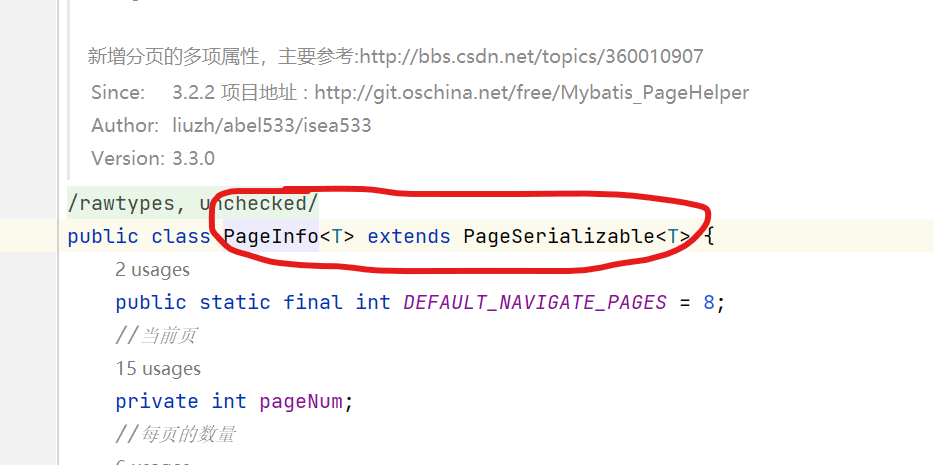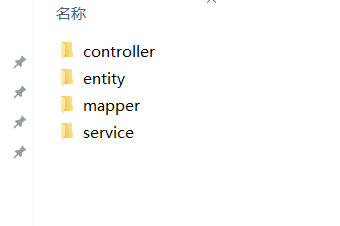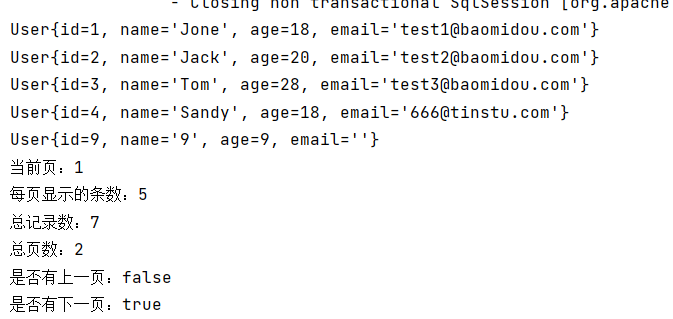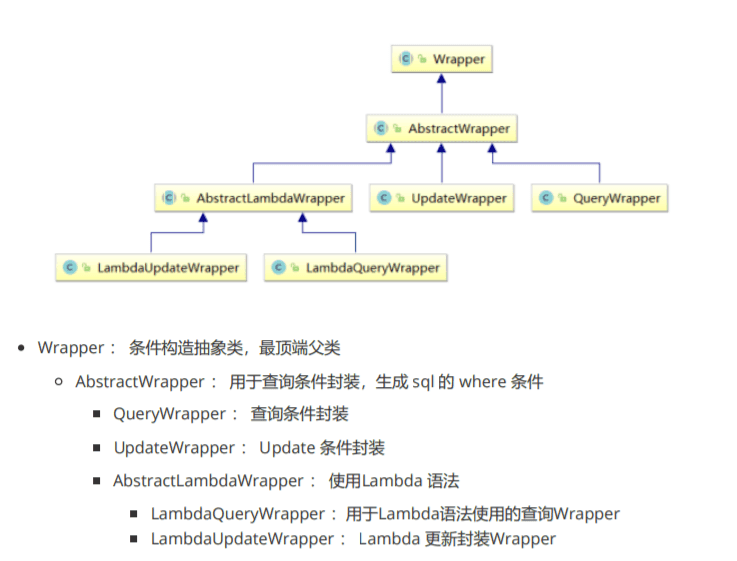MyBatis:动态SQL
1.if标签
-
-
在where后面添加一个恒成立条件
1=1 -
这个恒成立条件并不会影响查询的结果
-
这个
1=1可以用来拼接and语句,例如:当empName为null时 -
如果不加上恒成立条件,则SQL语句为
select * from t_emp where and age = ? and sex = ? and email = ?,此时where会与and连用,SQL语句会报错-
如果加上一个恒成立条件,则SQL语句为
select * from t_emp where 1= 1 and age = ? and sex = ? and email = ?
-
-
List<Emp> getEmpByCondition(Emp emp);
<!--List<Emp> getEmpByCondition();-->
<select id="getEmpByCondition" resultType="Emp">
select * from t_emp where 1=1
<if test="empName != null and empName !=''">
and emp_name = #{empName}
</if>
<if test="email !=null and email !='' ">
and email = #{email}
</if>
</select>2. where标签:
- 当where标签中有内容时,会自动生成where关键字,并且将内容前面多余的and和or去掉
- 当where标签中没有内容时,此时where标签没有任何效果
- 注意:where标签不能将其中内容后面多余的and和or去掉
<!--List<Emp> getEmpByConditionOne();-->
<select id="getEmpByConditionOne" resultType="Emp">
select * from t_emp
<where>
<if test="empName != null and empName !=''">
and emp_name = #{empName}
</if>
<if test="email !=null and email !='' ">
and email = #{email}
</if>
</where>
</select>3. trim标签
<!--List<Emp> getEmpByCondition(Emp emp);-->
<select id="getEmpByCondition" resultType="Emp">
select * from t_emp
<trim prefix="where" suffixOverrides="and|or">
<if test="empName != null and empName !=''">
emp_name = #{empName} and
</if>
<if test="age != null and age !=''">
age = #{age} and
</if>
<if test="sex != null and sex !=''">
sex = #{sex} or
</if>
<if test="email != null and email !=''">
email = #{email}
</if>
</trim>
</select>//测试类
@Test
public void getEmpByCondition() {
SqlSession sqlSession = SqlSessionUtils.getSqlSession();
DynamicSQLMapper mapper = sqlSession.getMapper(DynamicSQLMapper.class);
List<Emp> emps= mapper.getEmpByCondition(new Emp(null, "张三", null, null, null, null));
System.out.println(emps);
}
4.choose when otherwise
- 相当于 if.....else....if....else
-
when标签中,有一个满足,将满足的when标签内容拼接,不在继续往下执行,如果when都不满足,就拼接otherwise中的语句
<!-- List<Emp> getEmpByChoose(Emp emp);-->
<select id="getEmpByChoose" resultType="Emp">
select * from t_emp
<where>
<choose>
<when test="empName != null and empName !=''">
emp_name = #{empName}
</when>
<when test="email !=null and email !='' ">
email = #{email}
</when>
<otherwise>
did = 1
</otherwise>
</choose>
</where>
</select>5. foreach标签
批量删除操作
-
collection:设置要循环的数组或集合
-
item:表示集合或数组中的每一个数据
- separator:设置循环体之间的分隔符,分隔符前后默认有一个空格,如
, - open:设置foreach标签中的内容的开始符
<!--int deleteMoreByArray(@Param("eids") Integer[] eids);-->
<delete id="deleteMoreByArray">
delete from t_emp where eid in
<foreach collection="eids" item="eid" separator="," open="(" close=")">
#{eid}
</foreach>
</delete>@Test
public void deleteMoreByArray() {
SqlSession sqlSession = SqlSessionUtils.getSqlSession();
DynamicSQLMapper mapper = sqlSession.getMapper(DynamicSQLMapper.class);
int result = mapper.deleteMoreByArray(new Integer[]{6, 7, 8, 9});
System.out.println(result);
}
第二种写法:
<delete id="deletMoreByArray">
delete from t_emp where
<foreach collection="eids" item="eid" separator="or">
eid=#{eid}
</foreach>
</delete>此写法对应的sql语句为
delete from t_emp where eid=?or eid=?or eid=?批量添加操作
```xml
<!--int insertMoreByList(@Param("emps") List<Emp> emps);-->
<insert id="insertMoreByList">
insert into t_emp values
<foreach collection="emps" item="emp" separator=",">
(null,#{emp.empName},#{emp.age},#{emp.sex},#{emp.email},null)
</foreach>
</insert>
```
```java
@Test
public void insertMoreByList() {
SqlSession sqlSession = SqlSessionUtils.getSqlSession();
DynamicSQLMapper mapper = sqlSession.getMapper(DynamicSQLMapper.class);
Emp emp1 = new Emp(null,"a",1,"男","123@321.com",null);
Emp emp2 = new Emp(null,"b",1,"男","123@321.com",null);
Emp emp3 = new Emp(null,"c",1,"男","123@321.com",null);
List<Emp> emps = Arrays.asList(emp1, emp2, emp3);
int result = mapper.insertMoreByList(emps);
System.out.println(result);
}
```

6.sql标签
-
-
声明sql片段:
<sql>
<sql id="empColumns">eid,emp_name,age,sex,email</sql>-
引用sql片段:
<include>标签.
<!--List<Emp> getEmpByCondition(Emp emp);-->
<select id="getEmpByCondition" resultType="Emp">
select <include refid="empColumns"></include> from t_emp
</select>
阅读剩余
版权声明:
作者:Tin
链接:http://www.tinstu.com/1263.html
文章版权归作者所有,未经允许请勿转载。
THE END




